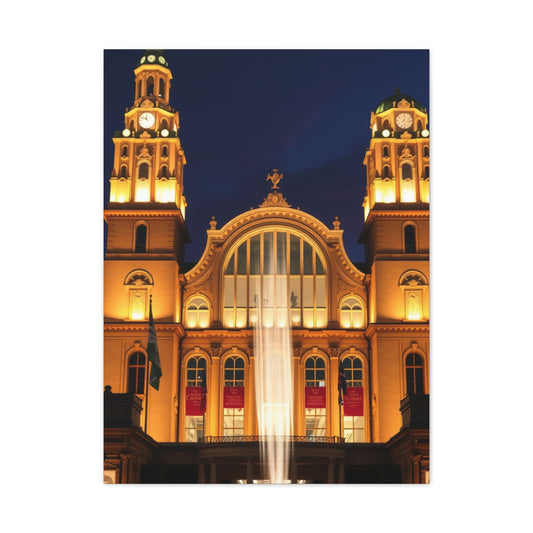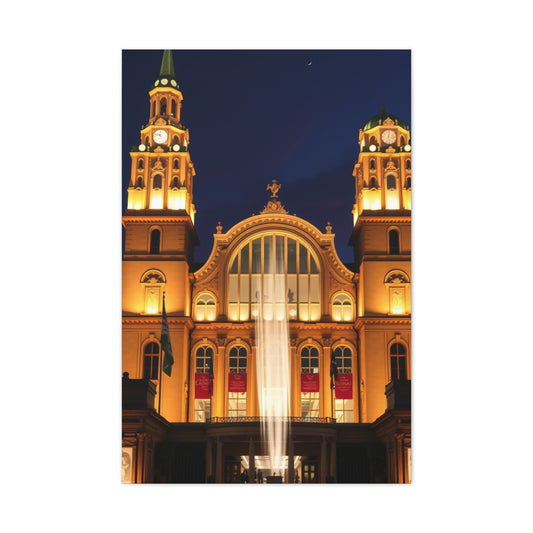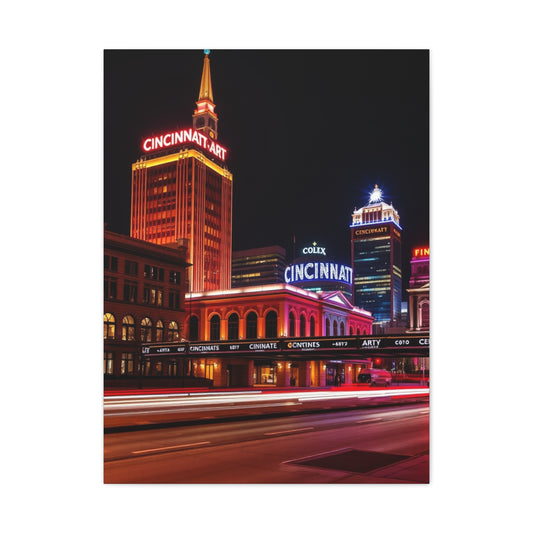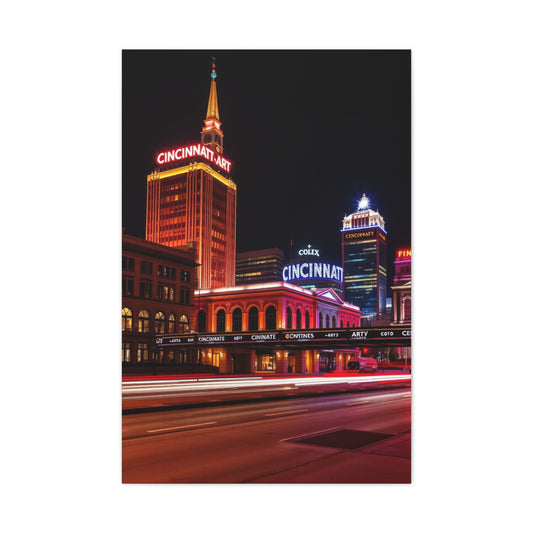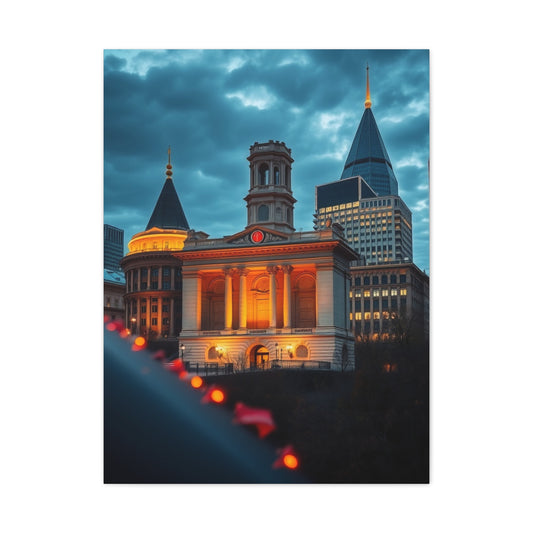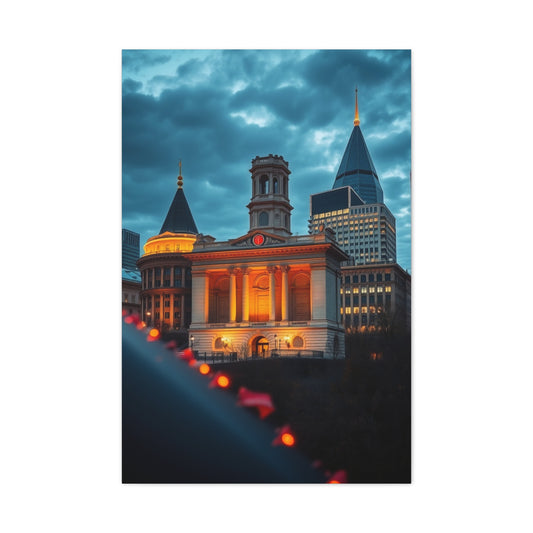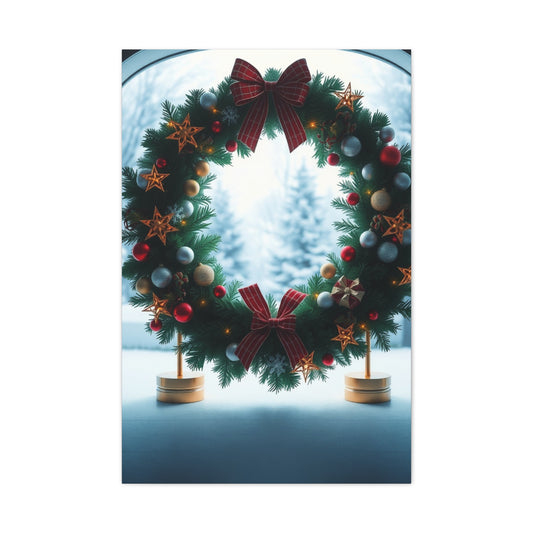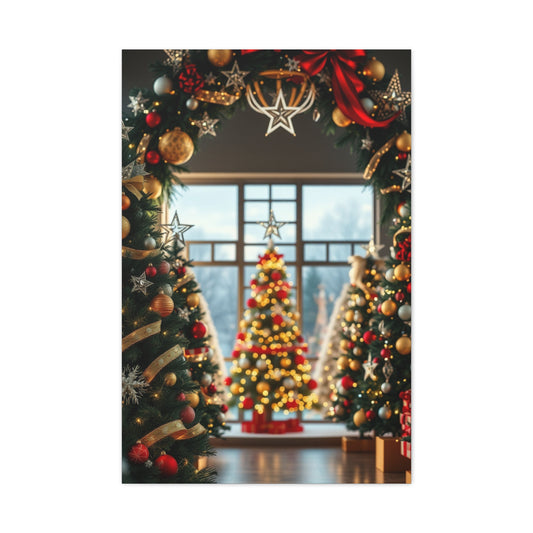Travel is more than just a change in scenery—it’s a transformative experience that etches itself into the tapestry of our lives. Each trip, whether across continents or just a weekend away, leaves behind not just photographs but fragments of memory, emotion, and revelation. Yet, in our increasingly digital existence, the treasures of these journeys often languish in forgotten folders or cloud drives, rarely revisited and even more rarely celebrated.
Transforming your travel photographs into wall art revives these moments, lending permanence and presence to the otherwise ephemeral. By incorporating them into your living space, you create a daily, visual connection to the experiences that have helped shape your worldview. These images transcend mere decoration—they become emotive vessels that ground your surroundings in authenticity and personal meaning.
|
Related Catagories: |
The Power of Print: Emotion Through Tangibility
In an age where life is consumed in swipes and digital thumbnails, printed photographs stand as quiet monuments to memory. They demand stillness. They evoke pause. When a travel image is translated into a piece of physical art, it becomes more than a visual—it becomes a sensory trigger. A photograph of a dusk-lit Santorini street may suddenly call to mind the scent of sea air and the distant strum of a bouzouki. A desert shot may reawaken the feeling of heat rising from sun-soaked earth.
The tactile nature of printed photography allows for deeper emotional engagement. Whether stretched on canvas, set in a minimalist frame, or layered in a gallery wall, these prints create a physical, emotional resonance that digital files can’t emulate. They invite reflection, spark conversations, and transform a room into a sanctuary of reminiscence.
Designing With Experience: Crafting a Personal Travel Wall
Travel photography is more than a hobby; it is a deeply personal expression of the way we see the world. The images captured during a journey hold a mirror to our most transformative moments—whether it’s the exhilaration of a bustling street in Hanoi or the solemn silence of a sunrise over Machu Picchu. These photographs become more than mere memories; they become autobiographical artifacts that deserve to live beyond the confines of a screen.
Designing a travel wall allows these profound moments to breathe. It gives them form, space, and significance within your home. But to truly honor these images, the wall should be approached with intention. Rather than simply filling a blank area with random prints, think of the display as a visual manuscript—one that narrates your journey in texture, color, and emotional cadence.
The first step in curating a compelling travel wall is selecting a storytelling framework. One approach is to group your images by emotional tone. Vivid markets alive with color and chaos can convey energy and discovery, while misty mountaintops or serene coastlines speak to solitude and reflection. Let the mood of the image dictate its placement and pairing. Alternatively, consider a chronological structure, starting from your earliest adventures and leading into recent explorations. This approach subtly documents your evolution as a traveler and as a person.
A third, equally evocative method is thematic organization. Perhaps you’ve developed an affection for architectural elements—the curves of Roman cathedrals, the ornate minarets of Istanbul, the bold lines of modernist structures in Tokyo. Or maybe you’re drawn to human connection—street musicians, artisans at work, children playing in alleyways. Let your wall reflect the deeper threads that run through your adventures.
In terms of composition, variety is essential for visual rhythm. Juxtapose expansive landscapes with tightly framed details. Pair wide-angle shots of sprawling deserts with macro images of intricate local patterns or textures. Vary the size and orientation of the prints to keep the eye moving across the display. Consider mixing print finishes—matte for softer imagery, gloss for bolder, high-contrast visuals.
Framing also plays a crucial role in setting the mood. Rough-hewn wood frames evoke rustic charm and pair well with rural scenes or traditional cultures. Sleek metallic or acrylic frames lend themselves to contemporary cityscapes or abstract travel compositions. Minimalist frames can emphasize the photograph itself, while ornate options contribute a decorative layer that enhances cultural ambiance.
A travel wall doesn’t just speak of where you’ve been—it reveals how those places changed you. Done well, it becomes a reflection not only of geography, but of growth, curiosity, and inner transformation.
Room-by-Room Impact: Bringing Your Travels Into Every Corner
Our homes are emotional landscapes in themselves. Each room holds a specific mood, purpose, and rhythm—qualities that can be amplified by the thoughtful integration of travel wall art. Understanding the character of a space allows you to match the right photo with the right environment, deepening the emotional resonance of both.
In a living room, which often serves as a communal and expressive space, travel photography should make a bold and memorable impression. Consider large-scale panoramas that draw the eye and create a feeling of grandeur. A sweeping Icelandic waterfall, a golden savannah stretching toward the horizon, or the layered skyline of a historic city can introduce scale, drama, and atmosphere. These pieces act as both conversation starters and focal anchors.
The bedroom, in contrast, is a sanctuary of calm and introspection. Opt for imagery that soothes and nurtures—softly lit forests, a quiet lakeshore at dawn, or a cobblestone street bathed in the golden light of late afternoon. These prints serve as emotional balms, inviting serenity and stillness. They also evoke intimate recollections, such as a honeymoon moment or a deeply personal solo retreat.
Hallways offer the perfect canvas for narrative progression. Think of them as visual corridors where stories unfold step by step. A well-curated hallway gallery can chronicle your travels across time or continents. The linear format encourages continuity and can be enhanced with uniform frames and even spacing, giving the impression of a curated exhibition.
Even the more functional areas of the home deserve attention. Kitchens and dining areas benefit from dynamic, high-energy images. A bustling souk in Marrakech, a colorful food market in Mexico, or a rustic Italian café scene can inject life into these spaces. Similarly, bathrooms—often minimal and monochrome—can be revitalized with vibrant coastal vistas or abstract reflections in water, introducing tranquility and color where it's least expected.
Utility spaces, mudrooms, or reading nooks can all be transformed with carefully chosen travel prints. These overlooked corners become micro-galleries, surprising guests and offering personal moments of inspiration in everyday routines. The beauty of travel photography lies in its ability to transport. With thoughtful placement, even the most ordinary spaces can become gateways to extraordinary memories.
Choosing the Right Format: A Medium for Every Mood
The emotional impact of an image doesn’t rest solely in what it depicts—it also depends on how it is presented. The printing medium you select plays an influential role in shaping both visual texture and overall mood. Each format enhances different photographic elements and supports specific atmospheres within your home.
Canvas prints are among the most popular choices for turning travel photos into home décor. The matte finish and textured surface add a soft, painterly effect that works beautifully for landscape photography and images rich in natural color. The visual depth of canvas gives a sense of movement and emotion, especially for images captured in golden light or those with pronounced foreground elements.
For a sleek, modern aesthetic, metal prints offer striking clarity and vibrancy. These prints use dye-sublimation technology to infuse color directly into aluminum sheets, resulting in intense contrast and brilliant saturation. Metal works best for urban shots, night photography, or compositions that rely on sharp details and high contrast—think neon lights in Tokyo or architectural geometry in New York.
Acrylic prints, with their glossy finish and luminous effect, are ideal for underwater photography, tropical landscapes, or images where light plays a central role. They create an almost three-dimensional depth and are particularly compelling when backlit. This format also offers a polished, gallery-like feel that adds sophistication to any modern interior.
Framed photographic prints on fine art or archival paper offer timeless elegance. These work well for black-and-white images, portraits, or minimalist compositions. A simple white mat and clean frame can draw focus to the subject and elevate it with subtlety. For those who favor classic styles, this format delivers refinement and lasting visual harmony.
Split-panel or triptych designs allow for creative storytelling. A panoramic view of the Andes or the lavender fields of Provence can be divided across multiple panels, inviting the viewer’s eye to travel across the entire scene. This format suits large walls or open-concept spaces and adds dynamism to expansive rooms.
When selecting a format, consider not only the aesthetic but also the lighting conditions of the room. Matte finishes are forgiving of glare and reflections, while glossy or metallic finishes need good natural or directional lighting to shine. Harmonize your choices with the design language of your interiors to ensure cohesion and impact.
Whether you’re printing a foggy mountain trek, a joyous local festival, or a contemplative café moment in Europe, the right medium will amplify the mood and emotion already embedded in the image. It transforms your memory from a flat visual into a layered experience that connects with the viewer on multiple sensory levels.
Personal Touches: Infusing Your Prints With Deeper Meaning
Personalizing travel wall art elevates it from decorative imagery to intimate storytelling. Each photograph taken during a journey holds more than a visual—it’s a fragment of emotion, a timestamp of personal transformation. By incorporating meaningful details into your prints, you not only create unique artwork but also build emotional landmarks within your space.
Adding personalized inscriptions—such as the GPS coordinates of a special spot, the date of a pivotal experience, or a short line of poetry—imbues your travel prints with soul. These additions serve as whispers of memory, prompting deeper connection each time your eyes meet the image. A photograph of Venice may become infinitely more touching when accompanied by the phrase “Where we promised forever.” A mountain trail in Patagonia may gain gravitas with its altitude and coordinates etched discreetly at the corner.
Consider framing your artwork with a short personal narrative or a travel journal excerpt. This literary pairing offers viewers more context and enriches the visual with emotional texture. These custom additions transform each print from a static image into an heirloom—a visual time capsule woven with sentiment and story.
Another powerful method of storytelling is creating photo collages or triptychs that capture an entire journey’s arc. Begin with the excitement of departure—perhaps a photo of packed luggage, a boarding gate, or the first glimpse of a new skyline. Then flow into key moments of immersion—cultural festivals, hikes, interactions with locals. Conclude with reflective shots—sunsets, empty streets, or your footprints in the sand. This layered storytelling presents your travels as evolving experiences rather than isolated snapshots.
For even more tactile engagement, incorporate physical mementos into your display. Mount printed tickets, foreign coins, hand-written notes, or pressed flowers in a shadowbox beside your travel photographs. These mixed-media inclusions bring authenticity and dimensionality, transforming your wall into an interactive memory map. It’s no longer just a gallery—it’s an emotional relic.
When crafting personalized travel art, the most compelling pieces are those that evoke reflection, nostalgia, or awe—not just in visitors, but in you. The goal is to turn visual memories into emotional echoes, resonating each time you pass by.
Eco-Conscious Printing for the Mindful Explorer
Today’s traveler is not just a seeker of new horizons, but often a conscious global citizen. The same mindfulness applied during ethical travel can extend into the creation of your travel-inspired decor. Choosing sustainable printing practices ensures that the beauty captured through your lens is matched by a responsible footprint.
Fortunately, many modern photo printing services are moving toward environmentally sustainable solutions. Look for options that utilize water-based inks free of harmful solvents. These alternatives not only provide vivid, long-lasting colors but also reduce the release of volatile organic compounds into the environment.
Paper choices also matter. Opt for recycled or FSC-certified paper, which ensures that the raw materials were sourced from responsibly managed forests. These papers often feature rich textures and tones, lending your prints an organic feel that complements nature-based or rustic imagery. Some providers offer tree-free materials made from alternative fibers such as cotton or bamboo—ideal for travelers who want to align their home decor with conservation values.
Frames and mounts can also reflect eco-conscious values. Select reclaimed wood or sustainably harvested timber for a rustic, nature-inspired look. These materials often carry their own unique character—subtle marks, aged tones, or grain variations—that enhance the authenticity of your artwork. Locally made frames support small businesses and reduce the carbon footprint associated with mass production or shipping from overseas.
Incorporating naturally sourced decor materials can further embed your values into your space. Weave in textures like hand-spun jute, organic cotton tapestries, or bamboo panels behind your photos. These accents, often sourced during your travels, contribute a grounded, earthy ambiance that complements the visual narrative and honors the cultures you’ve encountered.
Supporting artisans is another powerful way to infuse ethical practices into your display. Instead of defaulting to mass-produced accessories, commission local craftspeople to create custom mounts or frames from natural or repurposed materials. This investment not only supports livelihoods but also continues your cultural exchange well beyond the trip.
By choosing sustainable methods for printing and displaying your photos, you give added depth to your visual memories. Your walls then tell a story not only of your journeys, but also of your conscious engagement with the world—a reflection of both experience and integrity.
Beyond the Frame: Building Multi-Sensory Story Walls
A photograph can powerfully capture a moment, but memories live in more than sight. They reside in scent, texture, and sound. By integrating multi-sensory elements into your wall art, you turn your home into a gallery of living memory—a place where every piece invites not just viewing, but immersive recollection.
Start by identifying tactile items you brought back from your adventures. A swatch of embroidered fabric from a Moroccan souk, dried petals from a temple visit in Kyoto, or the coarse sand collected from a Chilean beach can add sensory authenticity. Arrange these objects around or alongside your prints to bring the scene to life. A framed photo of a Thai market gains dimensionality when paired with a small sachet of dried lemongrass or a strip of handmade silk. These details engage the senses beyond sight, stirring memory at a deeper level.
Incorporating travel journals, handwritten letters, or local newspaper clippings can add narrative structure. Pin or frame a passage describing your feelings during a particular stop—a moment of solitude in the Himalayas, or the chaos of a festival in Rio. These literary elements enrich your display with emotion and chronology, giving context to the visual and creating an experience that evolves as it’s explored.
Maps offer another immersive layer. Integrate vintage-style maps of the regions you visited, either as a background for your prints or in adjacent frames. Highlight your route using string, thread, or small markers to visually trace your path across borders. A corridor gallery could evolve into a global atlas of your memories, where every dot and line corresponds to a story told through imagery.
Audio can be subtly integrated as well. Small, motion-triggered sound modules can play ambient noise—waves crashing, bustling street chatter, or birdsong from a rainforest—bringing yet another sensory element to the space. These features, while optional, amplify the immersive quality of your travel wall and make it uniquely experiential.
If your style leans toward minimalist aesthetics, multi-sensory storytelling can still be achieved through materials. Pair your travel photo with natural elements like stone, driftwood, or hand-shaped ceramics. A black-and-white image of a Nordic landscape feels even more profound when displayed on a raw oak slab or accompanied by a sculptural piece from the region.
Lighting plays a vital role in evoking atmosphere. Use warm-toned spotlights to simulate the golden hour, or incorporate string lights and LED frames that enhance the tone and contrast of the print. Light is a silent yet powerful storyteller—it influences perception and deepens mood, casting shadows that dance like the memories themselves.
Building a story wall is about layering—not just materials, but meanings. You’re constructing a visual autobiography, a tactile narrative, and a curated museum of self. These choices, while highly personal, invite others to pause, explore, and connect with your adventures on a profound level.
Your wall, when thoughtfully designed, becomes a living archive. It bridges the ephemeral with the enduring, converting intangible emotion into curated expression. With the integration of objects, scents, textures, and words, you no longer just remember a place—you reinhabit it.
Prints With Purpose: How Images Anchor Our Memory
Photography has the profound ability to crystallize memory. Among the thousands of digital images we take during our lives, a select few resonate deeply—those captured during moments of awe, emotional connection, or internal transformation. These aren't just images; they're bookmarks in our personal timeline.
When travel photographs are printed and placed within our living environments, they transcend their role as mere visual artifacts. They become tangible echoes of who we were and what we experienced in a precise moment. A photograph, once printed, evolves into a psychological anchor. It's no longer simply an aesthetic element on your wall; it becomes a mirror reflecting your values, your journey, and your worldview.
Imagine walking into your home after a long day, and being greeted by a photo of an isolated temple at sunrise—a place where you once felt grounded, quiet, and whole. Or catching a glance of a bustling street corner in Marrakech as you make your morning coffee, the same street where you bartered for spices, laughed with strangers, and felt the pulse of life in its rawest form. These framed reminders act as emotional lodestones. They don't simply decorate; they affirm.
Photographs displayed in bedrooms, hallways, or intimate reading spaces reinforce a sense of continuity. They remind us not only where we’ve been geographically, but where we’ve traveled emotionally and spiritually. A single printed image can reawaken a chapter of identity—bringing forth the scent of the ocean breeze, the rhythm of a foreign city, or the comfort of self-discovery on a remote path.
Travel prints displayed in personal spaces become memory portals, inviting you to revisit the best parts of your life—not passively, but with full sensory recollection. In a world filled with digital distraction and fleeting moments, these physical prints offer grounding. They are evidence of life lived deliberately.
Choosing Photos That Speak: Focus on Emotion Over Perfection
One of the most liberating truths about transforming your travel photos into wall art is that the most compelling images are not always the most technically perfect. We often associate great photography with perfect lighting, sharp focus, and impeccable composition. Yet, in the realm of personal storytelling through visual design, emotion reigns supreme.
A photograph doesn’t need to be flawless—it needs to feel alive. Perhaps it's a slightly blurred capture of a street musician playing under lanterns in Kyoto, or a grainy shot of an impromptu dance in a Moroccan alleyway. These imperfections often contribute to the authenticity of the memory. They capture spontaneity and realness—two qualities that sterile, overly staged images often lack.
When selecting photos for printing and display, consider not what looks best on paper, but what feels most true. Does the image take you back to that moment? Can you remember the sound, the scent, the sensation of being there? A candid smile, an unexpected interaction, or a fleeting moment of solitude—these are often the pictures that pulse with lasting emotional impact.
Moreover, human-centered images tend to be more universally resonant. Photographs that capture expressions, gestures, or unspoken connection convey stories that transcend cultural and linguistic barriers. These images don’t just speak to you—they invite others to feel something too. A child waving in a foreign village, an elder at prayer, or even your own reflection in a shop window—they tell stories about empathy, time, and shared experience.
In curating emotional wall art, let intuition guide you. Allow vulnerability and resonance to outweigh technical precision. Because in the end, it's not about perfection—it's about presence.
Harmonizing Color and Atmosphere
Color is a subtle yet powerful storyteller in interior design. When used thoughtfully, it sets the emotional tone of a space and enhances its ambiance. Travel photography, with its natural diversity in color palettes, becomes a highly versatile design element when harmonized with room aesthetics.
Consider the psychological effects of different color families. Cool tones such as azure, jade, and slate offer serenity and are perfect for spaces that require relaxation—think bedrooms, meditation nooks, or spa-inspired bathrooms. A photograph of the Arctic tundra, a misty Scandinavian lake, or a twilight beach scene can exude a calming presence, acting as a visual lullaby.
On the other hand, warm tones like terracotta, ochre, and saffron introduce energy, warmth, and intimacy. These work well in dining areas, creative studios, or communal living rooms where vibrancy is welcome. An image of India’s Holi festival exploding in color, a Tuscan vineyard at dusk, or a bustling street market in Southeast Asia can enliven a room with cultural richness and depth.
Balance is crucial when integrating colorful travel photography into your interior. In minimalist or modern settings, a single vibrant image can serve as an eye-catching centerpiece. In bohemian or eclectic homes, you can experiment with layered prints, combining different color stories while maintaining a visual rhythm.
It’s also essential to consider the lighting in the room. Natural light can change the perception of your wall art throughout the day. Cool-toned images may appear more ethereal in morning light, while warm hues deepen with evening sun. Strategic lighting—like track lights or wall sconces—can further enhance the textures and tones of your photo prints.
For those seeking cohesion, use colors from your photograph to inspire accent elements around the room. A pillow, rug, or vase echoing the dominant hue of the print can subtly tie the visual narrative together. Conversely, contrasting the image’s palette with neutral backgrounds can make it stand out more boldly, turning your travel photo into a focal art statement.
In the art of design, every color tells a story. Let your travel prints contribute a chapter that aligns with your room’s mood, while enriching it with a touch of global perspective.
Integrating Emotional Storytelling into Interior Design
The most enchanting rooms are those that tell stories—not just through furniture, but through feeling. Integrating travel photography into your interior design is one of the most personal and powerful ways to do this. It transforms each room from a static environment into a living, breathing memoir.
When curated intentionally, travel photo prints can narrate everything from the courage of stepping outside your comfort zone to the peace of finding yourself in nature’s grandeur. Each room becomes a chapter, each image a line in your ongoing life narrative. For example, your hallway might document the wanderlust-fueled years of early adulthood, with vibrant street scenes, festival lights, and border-crossing moments. Your living room could evolve into a gallery of landscapes that reflect your love for vastness and solitude.
Add layers by integrating artifacts from those experiences—hand-carved masks from Africa, ceramic bowls from local artisans, woven textiles from Latin America. These elements create a cohesive storytelling environment, where the visual, tactile, and emotional intersect.
Even scents can participate in the sensory storytelling. Burning incense reminiscent of a Balinese temple or lighting a candle that smells like Moroccan mint tea can bring memories rushing back as you glance at the accompanying photograph. These small cues reinforce the narrative and turn passive viewing into an immersive experience.
Ultimately, incorporating your travel prints into your home is about emotional curation. It’s about choosing images that embody milestones and micro-moments, triumphs and transformations. Each print becomes a meditation—a silent yet profound reminder of what it means to explore, connect, and grow.
|
Related Catagories: |
Telling a Story with Series and Sets
While a single travel photo may capture the essence of a moment, a series of photographs can articulate the emotional landscape of an entire journey. Displaying curated sets of images—whether in diptychs, triptychs, or expansive collections—allows you to weave a cohesive narrative that unfolds visually across your walls.
This storytelling method is particularly powerful because it invites the viewer to experience a journey chronologically or thematically. A three-piece layout could illustrate the stages of a transformative hike: the trailhead bathed in morning light, a strenuous midpoint framed by towering cliffs, and the final panoramic summit. Similarly, a hallway lined with images from different continents becomes a passageway through cultures, climates, and memories.
To achieve visual harmony in your photo series, consistency is key. Use matching or complementary frames and maintain even spacing to establish a gallery-like aesthetic. This uniformity doesn’t limit creativity—it enhances it by ensuring the story flows without distraction. The repetition of framing creates visual rhythm, allowing the imagery to shine as the central focus.
Thematic grouping can enhance the storytelling potential even further. Try curating sets by concept—such as “coastal escapes,” “urban symphony,” “ancient wonders,” or “sacred stillness.” Alternatively, organize by natural light: morning blues, midday brights, or golden hour glows. Each approach offers a new lens through which to relive your travels.
Pair your sets with captions or small plaques that share reflections or cultural insights. These thoughtful touches encourage interaction and interpretation, turning passive viewing into an engaging experience. Your wall art becomes more than a design element—it becomes an evolving memoir.
Unconventional Spaces: Transforming Overlooked Corners
In interior design, overlooked corners offer hidden potential. Often dismissed as purely functional, these nooks and transitional areas can be reinvented as visual sanctuaries—ideal canvases for meaningful travel photography. With intention and creativity, even the most unassuming spaces in your home can become story-rich environments.
Take a narrow staircase, for instance. Rather than remaining a utilitarian passage, it can become a vertical gallery—a visual climb echoing your trek through the Himalayas or your ascent of a spiral tower in Barcelona. Staggered placements of prints, ascending in rhythm with the steps, create movement and draw the eye upward.
Laundry rooms or mudrooms, typically devoid of decoration, can be revitalized with imagery of serene landscapes—perhaps the quiet Amalfi coast or lavender fields of Provence. These tranquil visuals counterbalance the utilitarian nature of the space, turning the ordinary into something memorable.
Guest bathrooms offer a unique opportunity to surprise and delight. A small framed photo of a hidden Parisian alley or a misty Balinese rice terrace can add elegance and narrative to an otherwise overlooked area. These images also offer a chance to share personal experiences with visitors in an unexpected way.
Reading nooks, closets, and entryways also benefit from thoughtful curation. A single photograph of a sunrise in the Sahara or a bustling food stall in Bangkok can inspire a sense of intimacy and reflection. The idea is to infuse personal meaning into every square foot of your living space, regardless of its size or function.
By transforming these forgotten spaces into visual diaries, you create an environment where memory and design coexist. It’s not about covering every wall—it’s about celebrating the spaces that often go unnoticed, enriching them with beauty, story, and emotion.
Elevating Everyday Objects: Functional Art from Travel Photos
The emotional power of travel photography need not be limited to the vertical surfaces of your home. By embedding your memories into everyday objects, you transform utilitarian items into vessels of meaning. These tactile expressions of your journeys serve both function and sentiment, enriching your daily routines with a sense of wonder and nostalgia.
Imagine sipping your morning tea from a mug wrapped in a panorama of the Swiss Alps, or resting your head on a throw pillow adorned with the rooftops of Lisbon. These seemingly mundane moments are elevated by the integration of your personal imagery, turning them into micro-reflections on your experiences abroad.
Custom-printed journals, tote bags, calendars, and coasters offer even more opportunities for personalization. Each object becomes a point of connection between your lived space and the distant locations that have inspired you. These items are not simply souvenirs—they are design elements with emotional texture.
A particularly compelling option is a coffee table book made from your travel photographs. More than just a collection of prints, this book becomes an interactive story—complete with dates, anecdotes, and handwritten notes. It offers guests a chance to experience your travels through your eyes, bridging the gap between visual art and narrative.
Even more subtle integrations, such as drawer linings printed with a collage of travel moments, or custom lampshades featuring silhouettes from ancient ruins, provide intimate surprises. These designs do not demand attention but offer quiet, meaningful resonance.
This approach to interior design makes memory a part of function. It transforms the artifacts of your adventures into pieces you can touch, use, and revisit often. It blurs the line between decor and daily life, embedding the essence of your travels into the fabric of your home.
Embracing Technology: Digital Frames for Dynamic Display
For modern travelers with ever-growing photo libraries, digital photo frames offer an innovative and elegant solution to keep memories vivid and alive. These devices, sleek and versatile, allow you to display a rotating gallery of travel photography without the limitations of physical space.
Digital frames can store thousands of high-resolution images, automatically cycling through your most treasured moments. With app or cloud-based integration, you can update your frame from anywhere in the world—even from your phone while traveling. This feature allows your visual narrative to grow organically, turning your frame into a living document of your evolving journey.
Placed strategically on a nightstand, desk, or kitchen counter, a digital frame provides subtle storytelling throughout your day. Each time it transitions to a new image, it offers a spark of memory—perhaps a still lake at dawn, the chaos of a local market, or a child’s smile in a distant village. These fleeting glimpses invite spontaneous reflection and gratitude.
Many advanced digital frames now offer features like motion sensors, ambient light adjustment, and slideshow customization. You can tailor transitions to match the rhythm of your space—fast and vibrant for shared areas like kitchens, or slow and contemplative for quiet corners.
Unlike traditional prints, digital frames don’t require physical rearrangement. This flexibility is ideal for travelers who continue to explore and capture. Rather than deciding which five or six photos to frame and hang, you can showcase an ever-evolving collection that grows with each trip.
These devices are particularly useful in minimalist homes or small spaces, where wall real estate is limited. They provide a clean, clutter-free way to surround yourself with your favorite scenes without overwhelming the design of your space.
By embracing this fusion of technology and nostalgia, you preserve your travel experiences in real time, ensuring they remain an active, evolving part of your everyday life. Digital frames bridge the old and new, offering a modern tribute to timeless memories.
Creating a Home that Speaks Your Story
The ultimate aim of showcasing your travel photography—whether through curated wall art, functional design, or digital display—is to infuse your home with identity and intention. Each image, object, and story becomes a reflection of your curiosity, your courage, and your compassion as a global explorer.
Curating series and sets allows you to construct narratives. Repurposing quiet spaces reveals hidden possibilities. Personalizing everyday items brings sentiment into daily rituals. And leveraging technology ensures that your gallery is never static, but always alive.
Together, these design choices turn your space into more than just a home. It becomes a chronicle—a living, breathing archive of where you've been and who you’ve become.
In this ever-digital age, where so many memories vanish into pixelated archives, giving your travel experiences a physical, emotional, and aesthetic presence in your home is both grounding and uplifting. It is a creative celebration of life’s most transformative chapters.
Let your walls whisper of mountain winds, your coffee cup echo a far-off shore, and your spaces glow with the warmth of stories worth telling. In doing so, you turn your home into a soulful gallery of human experience—one photo, one memory, one moment at a time.
Final Frame: The Art of Honoring Your Journey
In a world of digital overload, printing your travel photos is an intentional act of preservation. It honors your journey—not just where you’ve been, but who you’ve become. Framed and displayed with care, these images evolve into sacred artifacts, quietly holding space for your memories.
Travel photography as wall art infuses your living space with personal depth and global perspective. It tells the story of your curiosity, your resilience, and your reverence for beauty. So don’t let your most meaningful images stay buried in storage. Frame them. Hang them. Let them speak.












